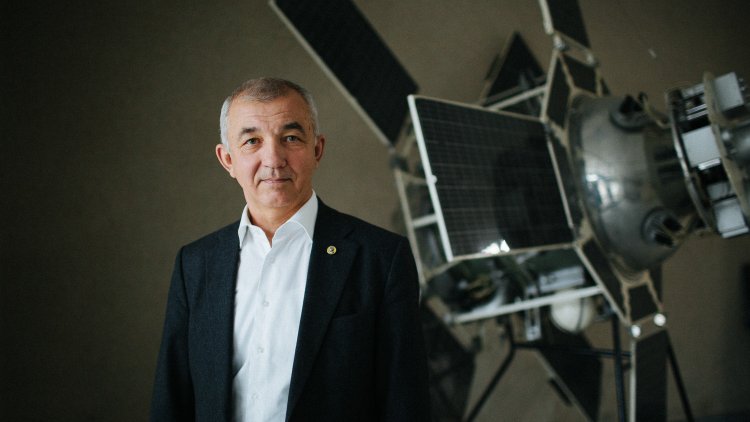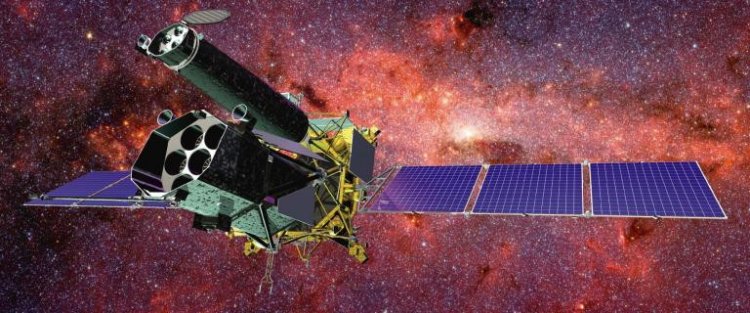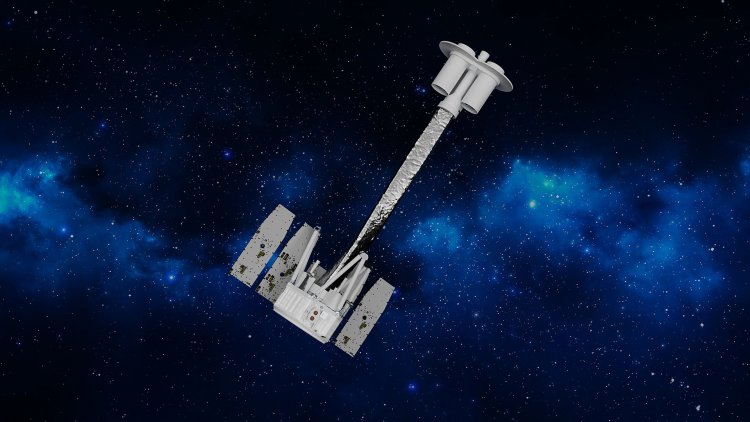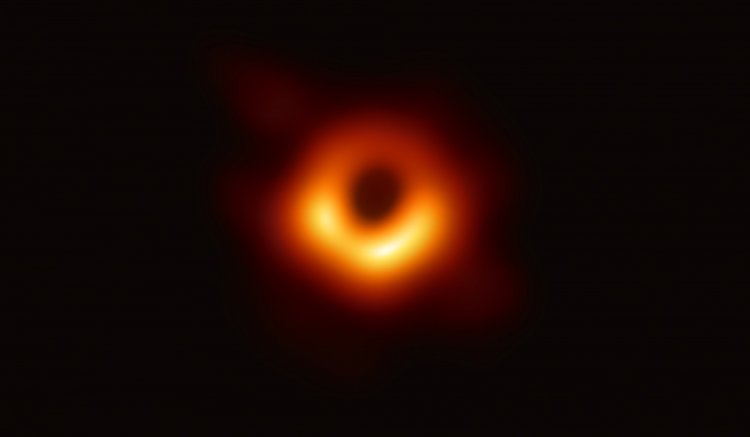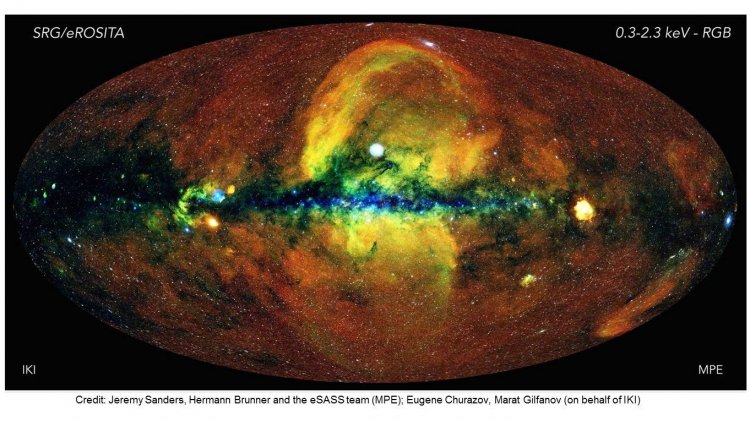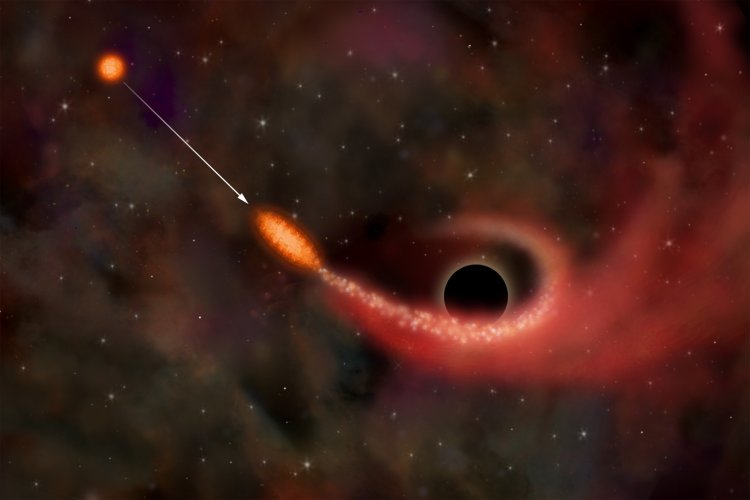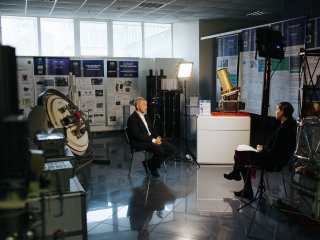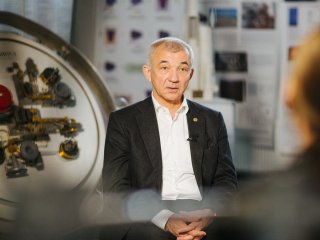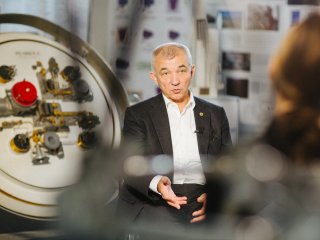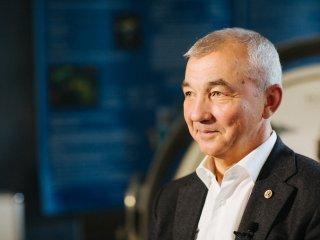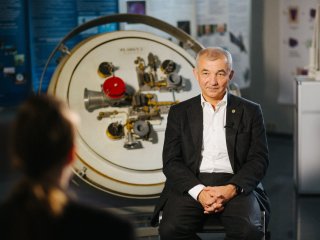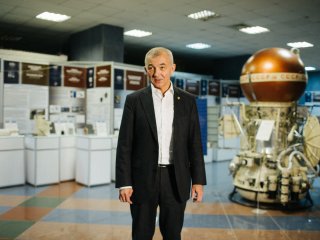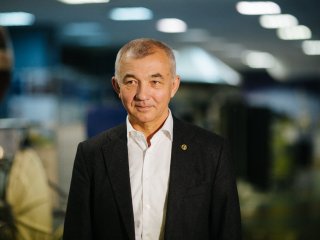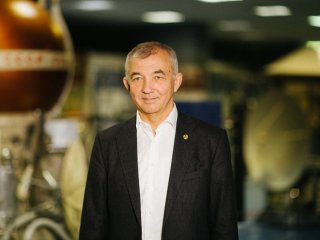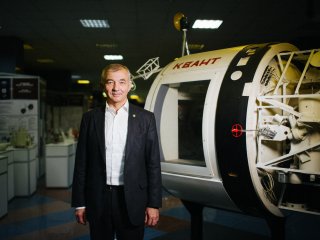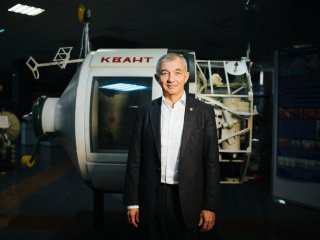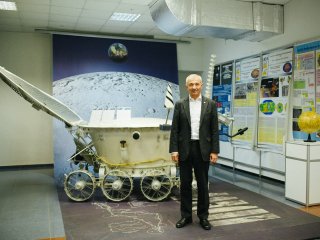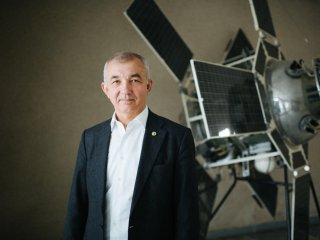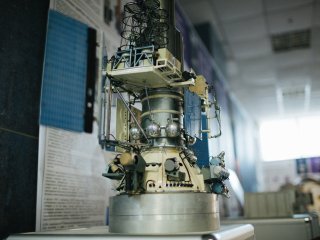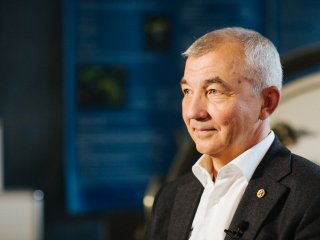When we look at the night sky, we see the moon, bright stars, as well as other planets of the Solar System. However, this is only a small part of the objects that exist in the universe. To see many others, for example, galaxies and quasars, we need the help of optical telescopes. But some objects are easiest to detect in the X-ray range: for example, black holes and neutron stars. However, X-ray observations from the Earth’s surface are impossible since X-ray radiation is completely absorbed by the atmosphere. Therefore, scientists and engineers are creating space observatories that operate outside the atmosphere of our planet. One of them, the Russian observatory Spektr-RG with the telescopes ART-XS and eROSITA on board, was launched from the Baikonur cosmodrome in the summer of 2019. Gilfanov talks about what astrophysicists saw on the unique X-ray map of the universe obtained by the eROSITA telescope of the Spektr-RG observatory.
Marat Ravilevich Gilfanov is the Chief Researcher at the Space Research Institute of the Russian Academy of Sciences, Professor, Corresponding Member of the Russian Academy of Sciences, head of the scientific working groups of the Russian consortium of the Spektr-RG/eROSITA telescope for building sky maps, cataloging X-ray sources, galaxies, quasars and tidal disruption events, member of the joint Russian-German calibration group of the Spektr-RG/eROSITA telescope, chairman of the scientific editorial board of the Russian consortium of the Spektr-RG/eROSITA telescope.
− First of all, I would like to talk about X-ray astronomy. What new possibilities does the X-ray range open up, and how does X-ray astronomy differ from optical and radio astronomy?
− The world of X-ray astronomy is amazing and beautiful. It is not at all like the world of optical astronomy or radio astronomy. If you look at the night sky, you will see stars, you will see the moon, other planets of the Solar System, and if you use an optical telescope, you will see other galaxies. At the same time, most of these objects in the X-ray range shine very weakly or practically not at all. On the other hand, there is a significant share of space objects that we cannot see in the optical range. In many cases, X-ray radiation allows us to see what is hidden from our eyes.
X-ray photons emitted by a cosmic source signal that the substance is in extreme astrophysical conditions. This can be a very high plasma temperature – more than 10 or even 100 million degrees Kelvin. Extreme conditions can manifest themselves in the form of gas flows that collide with each other at speeds of hundreds and thousands of kilometers per second, producing thermal radiation and accelerating cosmic rays. And in the areas near compact objects – black holes and neutron stars, where X-ray radiation is formed, the velocities can reach values close to the speed of light. Another example is relativistic jets, the formation of which is also associated with compact relativistic objects, both stellar-mass and supermassive. Magnetic fields can also be extreme. For example, in the so-called magnetars, the value of the magnetic field strength can reach 1015 Gauss. Such values are unattainable in terrestrial laboratories. Therefore, by studying cosmic sources of X-ray radiation, we expand the boundaries of the physical conditions and parameters of matter and radiation available for research by scientists.
However, two difficulties stand in the way of X-ray astronomy. The first is because the Earth’s atmosphere does not allow X-rays to pass through. For astronomers, this is a problem, but for everyone else it is, generally speaking, a blessing, because otherwise if X-rays freely reached the surface of the Earth, you and I would most likely not exist. Therefore, to make observations in the X-ray range, it is necessary to go beyond the Earth’s atmosphere.
Spektr-RG observatory
The second problem is related to the fact that X-rays are not so easy to focus on. Those mirrors that are installed in optical telescopes are not suitable for observations in the X-ray range. Therefore, we must resort to technological tricks. To date, the most used optics are oblique incidence. X-ray mirrors are designed in such a way that X-rays fall on them at sliding angles. Thus, the reflection of rays is made according to the laws of geometric optics, allowing them to focus.
After that, the X-ray photons must be registered, and their energy measured. Previously, gas meters were used for this purpose – chambers filled with gas under high pressure. Today, CCD arrays and solid-state detectors are used. For example, here, in the High-Energy Astrophysics Department of the IKI RAS, work is underway to create new promising types of X-ray detectors.
Due to these difficulties, X-ray astronomy has significantly lagged behind optical astronomy and radio astronomy. The date of birth of X-ray astronomy can be considered 1962 when X-ray radiation from a cosmic object - a neutron star in the Scorpius X-1 binary system – was first recorded. That is, X-ray astronomy is only 60 years old.
− Can we say that it complements optical and radio astronomy?
− Of course, everything works together. We are talking about the synergy between observational data in different ranges of the electromagnetic spectrum: X-ray, optical, microwave, radio, and others. And this is justified because often X-ray data alone is not enough. To understand the true nature of an object, it is necessary to look at what is happening to it, for example, in optical, radio, and other bands.
− That is, each type of radiation complements our knowledge of the universe and allows us to see different objects?
− Yes. Research in modern astrophysics is based on a set of data. It is remarkable that the results of many experiments, sky surveys, for example, in optical rays, in the radio range, etc., eventually become available to a wide range of scientists. In some cases, anyone (even those who are not professionally engaged in science) can download this data to their PC, try to do something with it, conduct their own research.
Today, almost all interesting and important studies are based on multi-wave data. Even the term “multiwavelength astronomy” has emerged. This approach makes it possible to determine the nature of the objects under study more accurately and fully.
− You are the author of widely cited papers on physical processes occurring in the vicinity of neutron stars and black holes. Why are these objects so attractive to scientists?
− It seems to me that they attract not only scientists but also a wide audience. I think this is due to a certain aura of mystery around them. In everyday life, we do not encounter such objects, so one might think that this is a figment of the imagination of physicists, which may not exist.
Indeed, compact relativistic objects were first predicted theoretically, and in the second half of the 20th century, astrophysicists began to look for evidence that such objects actually exist. Now we can say that these searches have been crowned with success – based on the totality of observational data, we know that both black holes and neutron stars (or something extremely similar to them) exist, and we are actively researching these objects. To date, their spectral properties have been described in detail. And a few years ago, we demonstrated that there is a completely clear and understandable difference between the spectra of accreting neutron stars and black holes, which can be used to determine the nature of a compact object by X-ray spectroscopy.
X-ray radiation is born near black holes and neutron stars, where extreme conditions of pressure, density, and temperature are realized. By studying its properties, we understand better how the metric is arranged near compact objects and how matter moves. By examining the profiles of emission lines or the shape of a continuous spectrum, one can, for example, say whether a black hole is rotating or not.
Recently, the IXPE X-ray satellite was launched, which is capable of measuring the polarization of X-ray radiation. Such measurements, in particular, will make it possible to more reliably determine the spins of black holes and measure the parameters of neutron stars, and thereby investigate the equation of state of neutron matter. By studying the trajectories of photons or the motion of particles near a black hole, we can investigate how spacetime is arranged near compact objects.
IXPE X-ray telescope in the artist’s view
It is also interesting that neutron stars and black holes, including supermassive ones, are the most common sources of X-ray radiation in the universe. Looking ahead, I will say that of all the sources that the eROSITA telescope of the Spektr-RG observatory has already registered (about 1 million 200 thousand in the half of the sky processed by the Russian consortium of the eROSITA telescope), about 950 thousand are supermassive black holes in distant galaxies.
− If we imagine that someday intergalactic flights will become a reality, and a person will be able to fly up to a black hole, what will they see from the porthole? Something like what was shown in the Interstellar movie?
− To be honest, I can’t even remember what was in this movie. But I think the black hole was depicted correctly.
What actually happens near a black hole? A strong gravitational field bends the trajectories of photons, which will determine the visual perception of an astronaut flying up to it. If we talk about what a black hole looks like from the outside, then it is appropriate to recall the results of the Event Horizon Telescope project. This is a colossal scientific and technological success because interferometry technology is extremely complex. Thanks to the efforts of a large team of scientists and engineers, it was possible to see the shadow of a black hole in the M87 galaxy. Of course, everything strongly depends on the angle at which you look at the accretion disk and the spin of the black hole, and how close to it you flew. By the way, I do not recommend flying too close, because you may get torn apart by tidal forces.
A supermassive black hole in the center of the M 87 galaxy. This is the very first high-quality image of the shadow of a black hole in the history of mankind, obtained directly in the radio range
− Tell us about the Spektr-RG orbital observatory, what are its main tasks, and what is its significance for science?
− The observatory has a long history. Everything began in 1987. At that time, I was a graduate student at the Institute of Physics and Technology (MIPT), I had already started working at the IKI RAS, and many events related to the creation of the observatory took place before my eyes, and I participated in some of them. I attended the very first meetings when the concept of the first version of the observatory was being created. Later, in the late 1980s - early 1990s, when the project was formed, I participated in the work of the international scientific committee of the observatory and the working group responsible for preparing for the processing and analysis of the future observatory data.
It was a completely different observatory with several large telescopes, created with the participation of broad international cooperation, including scientists from different countries: Denmark, the UK, Germany, Italy, the US, Switzerland, Israel, and others. Everything was going well, but then, there were big changes in our country, which, unfortunately, were accompanied by many economic and technological difficulties. Therefore, the creation of the observatory in its original version was not completed. And in the early 2000s, the project was completely closed.
Rashid Alievich Sunyaev, an Academician of the Russian Academy of Sciences and Chief Researcher of the Space Research Institute, has been and remains the scientific director and the main ideological inspirer of the Spektr-RG observatory all these years. Thanks to his perseverance, international connections, and faith in the project, the idea of recreating the observatory was back on the table by the mid-2000s. By this time, the country was growing stronger, the industry was reviving, including the space industry.
Among other things, it helped that in 1999 a small German satellite ABRIXAS was launched by a Russian rocket from Kapustin Yar. The launch was successful, but after the launch into orbit, the satellite’s electrical batteries almost immediately failed, and work with it had to be stopped. Although the project was not realized, the developments remained – the concept, calculations, and drawings of a modern wide-angle X-ray telescope. At the suggestion of Sunyaev, this telescope was significantly expanded, became ten times larger, and more sensitive to solve the problems of cosmology, which became the main ones for the revived Spektr-RG observatory – so eROSITA was born. By the way, the letter e stands for extended.
Thus, by 2007, the project was finally formed. Relevant agreements were signed between the space agencies and work began on the creation of an observatory.
In addition to participating in the eROSITA collaboration, we sought to create a domestic instrument - the ART-XC telescope. Its supervisor was Mikhail Nikolaevich Pavlinsky, my good friend and colleague. Unfortunately, in the summer of 2020, he left us. But he managed to see the results of the work of his brainchild − the ART-XC telescope named in his honor.
After a decade of painstaking work, the observatory was launched on July 13, 2019. We appreciate ROSCOSMOS for allowing a group of the most active participants of the project to go to Baikonur and attend the launch. It was an impressive sight; we were all overwhelmed with emotions.
Today, our space observatory with two modern X-ray telescopes is operating in a halo orbit around the so-called Lagrange point L2 of the Sun-Earth system, at a distance of one and a half million kilometers from Earth. At this point, the centrifugal force balances the gravitational force of the Earth and the Sun. Meanwhile, such an equilibrium is unstable, so it is necessary to adjust the orbit of the Spektr-RG satellite from time to time.
− Have the tasks of the observatory in the original version of the project been preserved or expanded?
− They have changed completely because the general concept of the observatory has also changed. In these 20 years – from the idea in 1988 to implementation in 2019 - the emphasis in astrophysics began to shift from detailed studies of individual objects to studies of large areas of the sky, studies of classes of objects, to the tasks of observational cosmology. This was made possible by the advent of new wide-angle telescopes adapted for the study of large areas of the sky.
Before the launch of the Spektr-RG observatory, the only X-ray sky survey was carried out by the German ROSAT satellite in 1991, and no new X-ray survey missions were planned (and still are not planned). Therefore, when the concept of a new version of the Spektr-RG observatory was discussed, it became clear that it was in this area that a breakthrough could be made. Accordingly, the eROSITA telescope has been optimized for the study of large areas of the sky. It is assumed that 8 reviews of the entire sky will be made in 4 years. Thanks to this, we will be able not only to build a detailed map of the entire sky and discover all the most interesting objects but also to track how they change over time.
If we talk about the scientific purpose of the observatory, it is largely related to the tasks of cosmology, the study of the formation of supermassive black holes, the study of the large-scale structure of the universe, and the measurement of cosmological parameters. As of the end of December 2021, we have conducted four full reviews and started the fifth.
− We have already managed to examine this extraordinary X-ray map of the sky, which was built by eROSITA. Tell us what its uniqueness is, and how significant is this map for the current and future generation of astronomers?
− The map is really unique. It’s impossible to stop looking at it. As I have already mentioned, at one time the first X-ray map of the entire sky was built by the ROSAT observatory. However, the telescope on the ROSAT satellite was noticeably smaller than on eROSITA and the survey lasted only 6 months. From the very beginning, the Spektr-RG/eROSITA was aimed at significantly surpassing the ROSAT survey – both in depth (by 25 times) and in angular and energy resolution.
X-ray RGB map of the entire sky, built by the eROSITA telescope of the Spektr-RG observatory. The map is shown in galactic coordinates. Large-scale structures are clearly visible – diffuse gas radiation in our galaxy, “eROSITA bubbles” and a dark band in the central plane of the map, formed due to the absorption of soft X-rays by gas and dust in the plane of the galaxy. Also visible are bright compact galactic sources, remnants of supernova outbreaks, stars, and numerous extragalactic sources – galaxies with active nuclei, quasars, and clusters of galaxies
The eROSITA telescope was developed in Germany at the Max Planck Institute for Physics and installed on the Russian Spektr-RG satellite, manufactured by Lavochkin and launched by ROSCOSMOS. The second telescope onboard the Spektr-RG observatory is the Russian ART-XC, operating in a more rigid energy range. Two large Russian deep space communication antennas have been receiving scientific data from the satellite every day for more than two and a half years, for which I thank them very much. In accordance with the Agreement between ROSCOSMOS and the German Aerospace Center (DLR), the data of the eROSITA is divided in half – the Russian consortium is responsible for processing data on one-half of the sky, and the German one on the other.
After the first sky survey and the analysis of the results, we realized that the map is so unique that it is impossible to show two halves separately. Therefore, the Russian and German consortia decided to unite and publish a joint article (it was published in Nature journal in 2020), in which we presented a map of the entire sky. I would like to note that further work with the data continues independently, in accordance with the agreement between the agencies.
The sky map is truly amazing. It shows a lot of interesting and unique objects. The map shows how rich the world of X-ray sources is in our galaxy. It was possible to see in detail the so-called eROSITA bubbles. Their existence was guessed based on the ROSAT map, but they are clearly visible on the map obtained by eROSITA, and many details of their morphology and features of their energy spectra can be investigated. We do not yet know exactly what caused this phenomenon − the activity of a supermassive black hole or an outbreak of star formation in the center of the galaxy, which could lead to the explosion of a large number of supernovae. This is all still to be found out. There is no doubt that the scientific community will work with our map for many more years.
− You said that you divided the sky in half. Is there any object on which this line runs?
− Yes, the line passes through the center of our galaxy, through the black hole Sagittarius A*. The Russian and German consortium will process and publish the observation data of this most interesting object and the study of its variability together.
− Let’s talk about one more important task that the Spektr-RG observatory faces, related to solving the mystery of dark matter and dark energy. Is there any progress in this direction?
− Our main efforts are now focused on building an X-ray map of the entire sky and creating a catalog of X-ray sources, their identification, classification, and determination of the redshifts of extragalactic sources. And the scientific task of the Spektr-RG/eROZITA telescope lies in the field of cosmology. We are talking about measuring the parameters of our universe, such as the density of the so-called dark matter and dark energy, the Hubble constant. For this purpose, samples of galaxy clusters and quasars detected by eROSITA will be used (for this, a high-quality X-ray catalog of eROSITA is needed).
Galaxy clusters are the most massive formed structures in the universe, their masses can reach 1015 solar masses. The process of their formation is amenable to description, and their mass distribution depends on the parameters of the universe. The distribution of quasars and clusters of galaxies in the sky also depends on the parameters of the universe and the redshift.
The parameters of the eROSITA telescope and the sky survey were chosen in such a way that it registered all massive clusters of galaxies in the visible part of the universe and a large number of quasars in a wide range of redshifts. Due to the sample size, and we assume that the Spektr-RG will register about 100 thousand clusters and groups of galaxies and about 3 million quasars, we will be able to carry out high-precision cosmological measurements.
There are various methods for measuring cosmological parameters using type Ia supernovae, fluctuations in the brightness temperature of the microwave background, the mass function of galaxy clusters, and others. Many of them have degeneracy between different parameters of the cosmological model, i.e., the value of one parameter is correlated with the value of the other. By combining different methods, these degenerations can be removed. It is also important to make sure that measurements by different methods give compatible results. This demonstrates that our ideas about the laws of nature, about how the universe works, are apparently correct.
We hope that the data from the Spektr-RG/eROSITA telescope will allow us to make a significant breakthrough in this direction, and in the next decade, we will be able to understand how dark matter works.
− The universe captivates us with its phenomena. You and your colleagues are studying the so-called tidal disruption events. Does eROSITA see them, and what are they?
− This is a very interesting question. To begin with, the Spektr-RG observatory makes a complete sky survey every six months. In other words, any point in the sky is in the path of the scanning trajectory and can be examined every 6 months. This allows us to monitor the variability of the X-ray sky. For example, diffuse gas structures on the map do not change, and neither do galaxy clusters. And quasars, X-ray binaries, and active stars in our galaxy are all variable. And this variability carries a huge amount of information. In particular, we register highly variable objects that change their brightness more than 10 times in six months.
About half of them are stars of certain spectral classes in our galaxy, which flare up from time to time. In fact, stellar flares have been known for a long time, but now we have accumulated a colossal sample of several thousand events, which are analyzed by a group of astronomers at Kazan Federal University under the leadership of Professor I. Bikmaev. The collected data tell us about the types of stars, how often these flashes occur, what their amplitude is, and so on. In particular, we register flashes from protostars, that is, very young objects. But in addition to stars, numerous quasars and Seyfert galaxies demonstrate significant variability. The luminosity of some of them changes 15-20 times in six months, which, generally speaking, is surprising – the mechanisms of such variability are not yet fully understood.
Let me remind you that the electromagnetic radiation of such space objects is explained by accretion, the process when matter “falls” on a black hole or neutron star, forming an accretion disk. So, the characteristic time of change in the luminosity of the accretion disk around supermassive black holes is very long – thousands of years or more. Therefore, a 10-fold change in brightness in 6 months is a rather strange phenomenon that requires explanation. Now we are just engaged in the study of this problem. Our survey of the entire sky with the help of the Spektr-RG/eROSITA telescope allows us to make a census of such objects that have changed their luminosity many times, and to find out if there are any patterns in their optical properties.
But among such variable objects, there is another amazing class associated with the tidal disruption of stars in the gravitational field of a supermassive black hole. We usually find such transients in an “empty” place, where a bright source has not been observed before and they are associated with ordinary normal galaxies in which there is no core activity associated with accretion to a supermassive black hole. An important step in confirming the nature of such events was optical spectroscopy of the parent galaxy. For this purpose, we use the best Russian telescopes – the 6-meter BTA telescope of the Special Astrophysical Observatory of the Russian Academy of Sciences in the Caucasus, the AZT-33IK telescope of the Sayan Observatory, the Russian-Turkish RTT-150 telescope in Turkey, the telescope of the Caucasian Mountain Observatory of the Sternberg Astronomical Institute of Moscow State University, as well as the 10-meter telescopes of the W. M. Keck Observatory in Hawaii and the Palomar Observatory telescope.
Tidal disruption events were predicted more than 40 years ago theoretically and detected before, including by the ROSAT satellite. What are they? When a star approaches too close to a supermassive black hole, the tidal forces in the gravitational field of the supermassive black hole become so great that the star’s own gravity is no longer able to hold its matter and the star is torn apart by tidal forces. At the same time, part of the star’s substance can accrete to the black hole, leading to a powerful flash of radiation. Such flashes are sometimes observed only in optics, sometimes only in X-rays, and sometimes in optics and X-rays.
How exactly a star breaks up and accretes into a supermassive black hole is the subject of complex and time-consuming computer calculations. To date, there are several models that our observations will eventually allow us to refine.
During the sky survey using the Spektr-RG/eROSITA telescope, we register about 20 such events every six months. As part of this work, we are actively cooperating with colleagues from the California Institute of Technology. They have at their disposal an installation called the Zwicky Transient Factory. This is an optical telescope with a huge field of view (almost 50 square degrees) and a sensitive CCD matrix, which allows you to register and study optical transients of all kinds, including tidal disruption events.
Tidal disruption event of a star in the gravitational field of a supermassive black hole in the artist’s view
A few years ago, it was noticed that our colleagues from CalTech were registering events not similar to those detected by ROSAT in the X-ray range. Thanks to the Spektr-RG/eROSITA data we are beginning to understand that there is a wide class of tidal disruption events with different ratios of luminosities in the X-ray and optical ranges. It is not yet clear what exactly can be considered a key parameter. According to some models, we are talking about the orientation of a “swollen” supercritical accretion disk, other models predict that everything is determined by the sighting parameter with which the star flies up to the black hole. The final answer to these questions will help to give observations, including our observations with the help of the Spektr-RG/eROSITA telescope.
Today this is a rapidly developing and extremely interesting field of astrophysics, the cutting edge of science. Our group makes a great and noticeable contribution to the common cause. Last year we published the first eROSITA catalog of such events. We measured the frequency, built the luminosity function, and continue to work on them, improve and refine. A catalog of tidal disruption events detected during the first two years of the sky survey is being prepared for publication. I think that in the coming years we will be able to understand how tidal disruption actually happens.
A friendly team of scientists is working on these and many other tasks at the IKI RAS within the framework of our scientific working groups of the Russian consortium of the Spektr-RG/eROZITA telescope – Professor of the Russian Academy of Sciences Sergey Sazonov, Candidate of Physical and Mathematical Sciences Rodion Burenin, young Candidates of Sciences Pavel Medvedev and Georgy Khorunzhev, Candidate of Physical and Mathematical Sciences Roman Krivonos, graduate students Mikhail Belvederesky, Igor Zaznobin, Grigory Uskov. A group of seniors of CMC MSU under the leadership of Alexander Meshcheryakov develops machine learning methods and neural networks and applies them to eROSITA data to classify sources and determine their photometric redshifts.
− Let’s summarize. Can we say that the Spektr-RG orbital X-ray observatory will provide astrophysicists and cosmologists with work for the coming decades?
− Yes, absolutely. A large amount of data has already been accumulated, which will have to be analyzed for 10-15 years, and maybe longer. The X-ray sky survey continues. We are working on the creation of an X-ray catalog of Spektr-RG/eROSITA sources, identification, and classification of sources, determination of their redshifts. Separate work is underway to create a catalog of galaxy clusters and a catalog of distant quasars. All this will allow us to start cosmological research soon and look for answers to questions about how supermassive black holes were formed in the universe, how its large-scale structure is arranged, what are its parameters, what is the nature of dark matter and dark energy. Now there is no doubt that the sky survey with the help of the Spektr-RG observatory will make a serious contribution to solving these problems.
